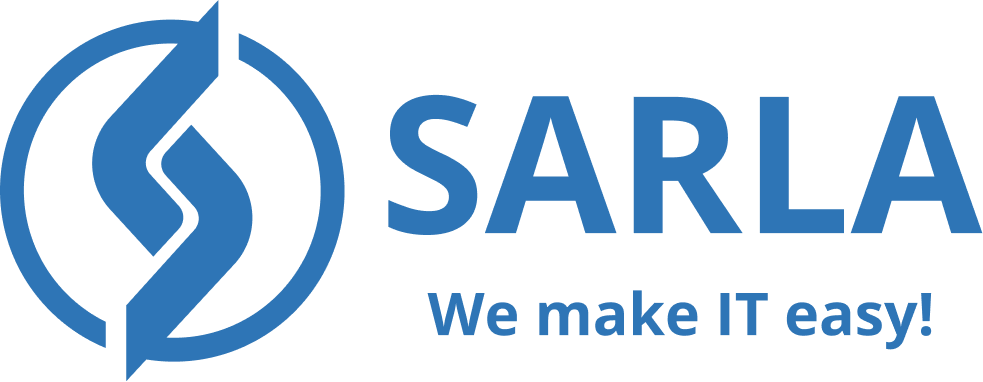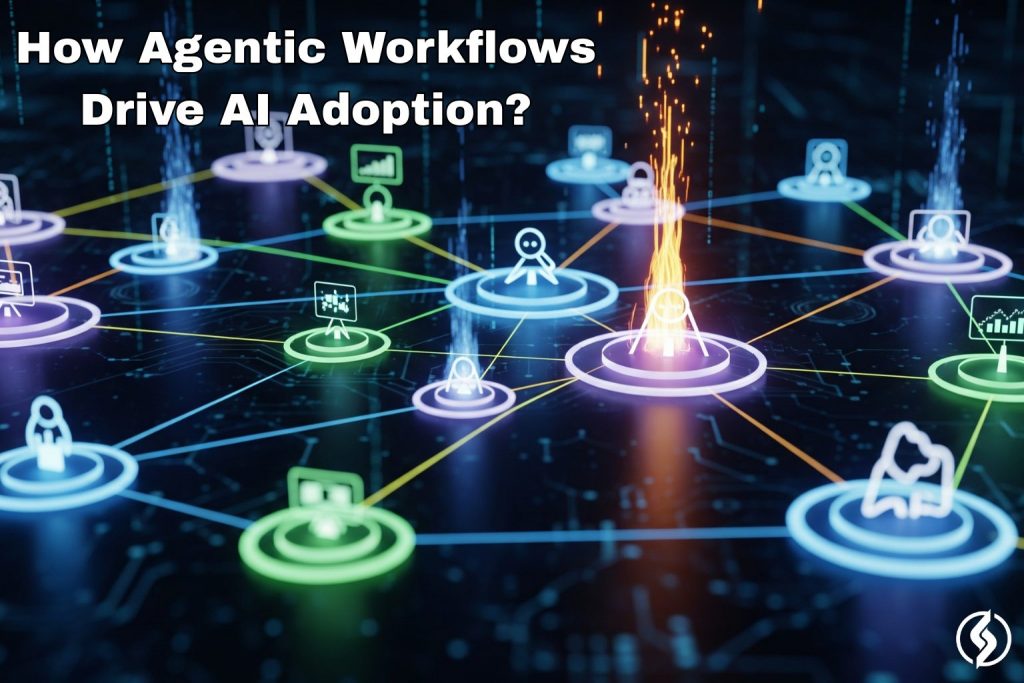If you do not innovate constantly, along with maintaining operational efficiency, chances are that you will fall behind in the race with your competitors. AI is the new development that all companies want to invest in. They are trying to understand the usage of AI and how it can help their business grow. However, AI adoption often lags due to resistance, skill gaps, and fragmented workflows. Here is a simple way to overcome these issues:
“Agentic workflows”
Dynamic, autonomous AI systems like Salesforce Agentforce are transforming change management by ensuring AI delivers measurable outcomes while engaging employees effectively. Unlike static or rule-based automation, agentic AI learns continuously, recommends optimized actions, and can autonomously execute tasks within a CRM environment.
Salesforce’s Agentforce is a prime example, allowing organizations to automate sales, service, and operations tasks while monitoring adoption and improving process efficiency.
What are the key barriers to AI adoption?
Before we dive in deep to understand the use of AI and agent force, it is essential to check in the areas where the companies lag and do not want to pull in the AI card.
Cultural Resistance:
Employees may fear job displacement or be hesitant to trust AI recommendations. Since it is learning in real time, AI can make redundant choices that may not work well for business growth. However, the sooner you incorporate AI in your business, the better advantage you will have in the future.
Skill Gaps:
Many organizations report that only 10% of employees actively leverage AI tools effectively. Even though the younger generation is well versed with the capabilities of AI, the boomers are still confused about the actual use and are hesitant to learn something that has been portrayed as potentially dangerous.
Operational Friction:
Disconnected systems and manual workflows reduce AI impact. Some companies are still using systems that are not compatible with AI. Others have been taking the data in silos and manually driving inferences to showcase the growth. It reduces the operational efficiency. Sarla Consulting suggests that a system upgrade can bring your silos in one place and help automate many manual tasks.
Unclear ROI:
Without immediate visibility into benefits, adoption rates stagnate. Most CEO and people at a higher level want to know the benefits and growth that other companies witness with the use of Agentic and are waiting for such numbers before adopting the process.
The LEVERS Framework for AI-Driven Change Management
LEVERS include training programs, workflow redesigns, and leadership communication that directly influence adoption. By identifying and applying the right levers, companies accelerate impact and reduce resistance to new technologies.
Leadership: Executives should model AI usage, integrate AI adoption into KPIs, and communicate clearly about its benefits.
Ecosystem: Create cross-functional AI adoption networks, including champions from each department, to encourage peer learning.
Values: Connect AI initiatives to meaningful business outcomes, such as improving patient care, reducing operational inefficiencies, or enhancing customer experience.
Enablement: Provide hands-on training, pilot programs, and accessible Trailhead resources to accelerate learning.
Rewards: Incentivize early adopters, gamify usage, and highlight success stories to maintain momentum.
Structure: Establish governance frameworks, document workflows, and ensure compliance with corporate policies and regulatory requirements.
Benefits of Agentic Process Automation
Proactive Execution: AI acts, not just recommends, improving process reliability. It can offer real-world solutions that are customized for your business. It is like a personal assistant that is loyal to your company and can showcase data that supports your actions with detailed research and projections.
Faster ROI: According to TechRadar, 73% of traditional AI insights fail to convert into action. Agentic AI ensures recommendations are executed automatically, closing the gap between understanding and impact. It is built for a business that can scale and automatically take specific actions to help your business grow.
Agile Adoption: By embedding AI into daily workflows, teams can adapt quickly and trust the technology. You can utilize the expert team from Sarla Consulting for an after-sales introduction to Agentic AI. We can help your team understand the nuances of how it operates and get them used to the new model before they start their work.
Enhanced Transparency: It means giving employees and leaders clear visibility into how AI systems operate. Dashboards that track decisions, data sources, and outcomes reduce the “black box” perception of AI. This openness builds trust, reinforces accountability, and ensures teams feel confident in relying on AI-driven insights for daily decisions.
Future Outlook
Agentic AI is set to redefine CRM and change management. Autonomous workflows will become a central aspect of enterprise operations, bridging the gap between AI insight and action. Industries like healthcare, finance, retail, and nonprofits are increasingly leveraging agentic AI to drive operational agility and strategic alignment.


Samuel890
https://shorturl.fm/d4lGS
Allison3899
https://shorturl.fm/J5KuT
Edgar2820
https://shorturl.fm/tfgu4
Carter688
https://shorturl.fm/JI65A
Agnes4450
https://shorturl.fm/2f0pY
Sylvia2743
https://shorturl.fm/g9Rcf
Aubrey4471
https://shorturl.fm/j7ys0
Ally2435
https://shorturl.fm/7qBO2
Abram4410
https://shorturl.fm/4gBjN
Colette2021
https://shorturl.fm/d5D9z
Hector2792
https://shorturl.fm/tzHbh
Claire852
https://shorturl.fm/av6bg
Brittany2156
https://shorturl.fm/541HJ
Cecilia4520
https://shorturl.fm/YC6iG
Chuck2103
https://shorturl.fm/hiy5E
Wilson2125
https://shorturl.fm/OfM1Z
Jim150
https://shorturl.fm/2ZTAT
Marley3250
https://shorturl.fm/HTAoq
Abby869
https://shorturl.fm/c3pfK
Roman917
https://shorturl.fm/JtZyT
Leah4789
https://shorturl.fm/jRnsp
chesterfieldph
Interesting analysis! Seeing patterns is key, and platforms like chesterfield ph app casino seem to understand that, offering diverse games. Registration felt surprisingly smooth, like they prioritize a good user experience! It’s about balancing fun with security, right?
chesterfieldph
Interesting analysis! Seeing patterns is key, and platforms like chesterfield ph app casino seem to understand that, offering diverse games. Registration felt surprisingly smooth, like they prioritize a good user experience! It’s about balancing fun with security, right?
bengoplus
Interesting take on responsible gaming! Transparency, like Bengo Plus offers with its RTP, is key for smart players. I checked out bengo plus club – convenient local payment options are a big plus for PH players! Definitely a platform to consider.
bengoplus
Interesting take on responsible gaming! Transparency, like Bengo Plus offers with its RTP, is key for smart players. I checked out bengo plus club – convenient local payment options are a big plus for PH players! Definitely a platform to consider.
jlboss
Lottery analysis is fascinating – the odds are truly astronomical! It’s cool seeing platforms like JLBoss Games simplify the experience. Quick jlboss login & easy funding options make it accessible. A fun distraction, even if probability isn’t on your side! 😉
jlboss
Lottery analysis is fascinating – the odds are truly astronomical! It’s cool seeing platforms like JLBoss Games simplify the experience. Quick jlboss login & easy funding options make it accessible. A fun distraction, even if probability isn’t on your side! 😉